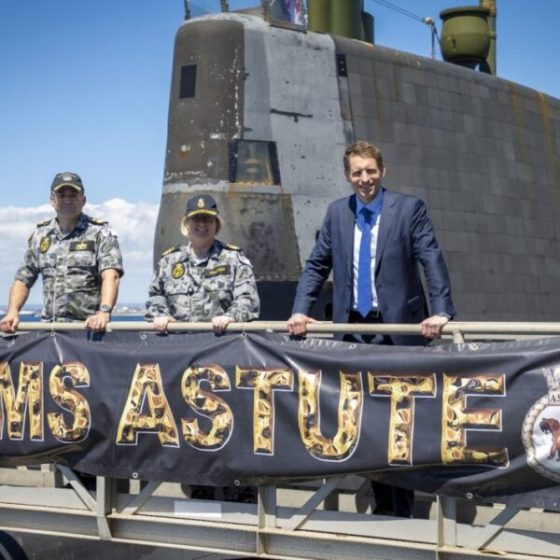
Amid worries the brand-new US-UK-Australia military agreement may provoke a future confrontation with China, past and present cooperation between Australian and British elites in military, intelligence, nuclear and immigration policies supply numerous causes for issue.
By Antony LOEWENSTEIN, Peter CRONAU
Australia’s independence from Britain has been objected to ground since the country’s birth in 1901– the first genuine test being Australia’s choice to send soldiers to Europe for Britain’s war with Germany in 1914.
2 bitterly fought referenda to enable military conscriptionwere narrowly defeated– Australia’s contribution to the Great War was to stay a voluntary one.
Progress to 2021 and the relationship is no less controversial. U.K. Prime Minister Boris Johnson and U.S. President Joe Biden announced a new Indo-Pacific military alliance with Australian Prime Minister Scott Morrison in September and awkwardly titled it AUKUS (which as one nave kept in mind, sounds better than USUKA).
In announcing AUKUS, the 3 leaders loftily claimedto be “directed by our withstanding perfects and shared commitment to the global rules-based order.”
The U.K. in July indicated its re-emergence as a Pacific Ocean force when it revealed the attack aircraft carrier HMS Queen Elizabeth would lead a fleet of U.K. navy ships to accompany the U.S. Navy in leading a flotillaof warships consisting of Australian and Japanese vessels through the South China Sea.
The Australian Defence Department would neither validate nor reject the exact nature of the maritime workout. Nevertheless, on this event the fleet kept a wary distancefrom Chinese-claimed area.
The U.S. may brandish the world’s most powerful military however it is turning towards its conventional good friends as itreadiesfor conflict, and possibly conflict, with the increasing economic and military powerhouse of China.
The AUKUS treaty saw Australiamarvelously disposeits $90 billion contract with France to build Australia’s brand-new submarine fleet, rather announcing a deal to buy U.S. and U.K. innovation and construct nuclear-powered submarines in Australia.
Although not nuclear armed (yet), the first of thenew nuclear submarineswill not be ready up until as late as 2040. Other components of the treaty, however, will come into play much sooner. Australia will invest $30 billion onbrand-new weapons, including a suite of long-range rockets for its navy and air force, as well as land-based accuracy strike rockets, mostly sourced or developed in combination with the U.K. and U.S.
Britain’s resurgent interest in the Pacific region as a part of its “improved international advocacy” wasannouncedin March with Johnson mentioning the technique will “tilt to the Indo-Pacific, increasingly the geopolitical centre of the world.”
Together with the U.S. “pivot to Asia”laid outby U.S. President Barack Obama in 2011, Australia is becoming a focus of a fast military build-up.
Australia remains in a precarious position as the “tilt” and “pivot” of these major powers’ global activism plays out on the tactical balance in the Indo-Pacific. Australia is hoping it is more than a simple “appropriate piece of realty” adrift in the South Pacific.
The world might have got some insight into the real nearness of the brand-new AUKUS relationship when in a September press conference Boris Johnson described Scott Morrison as “prime minister Morris” and Biden forgothis name entirely, describing him instead as “uh, that fella down under.”
Joint Work on New Weapons
In the 1950s and 60s Britain persuaded Canberra to allow it totestits prototype a-bombs in South Australia. With a nuclear ascendant U.S., Britain was racing to keep a seat at the nuclear table. Australia on the other hand was hoping that assisting Britain would ensure them a “nuclear guarantee”.
Described as safe, the bombs’ fallout from the Maralinga and Emu Field evaluatesinfectedanimals and people, and fallout carried by winds was discovered as far away as Sydney, Brisbane and Adelaide.
British disinterest saw aRoyal Commissionin 1985 that led to Australia humiliating the U.K. into assisting fund an attempted clean-up of the sites, with works ending in 2000.
As well as nuclear weapons screening, the Australian desert lands of theAnangu native peopleshave for 60 years likewise hosted other weapons advancement jobs, rocket shootings and rocket tests at the RAAF Woomera Variety Complex, near Maralinga.
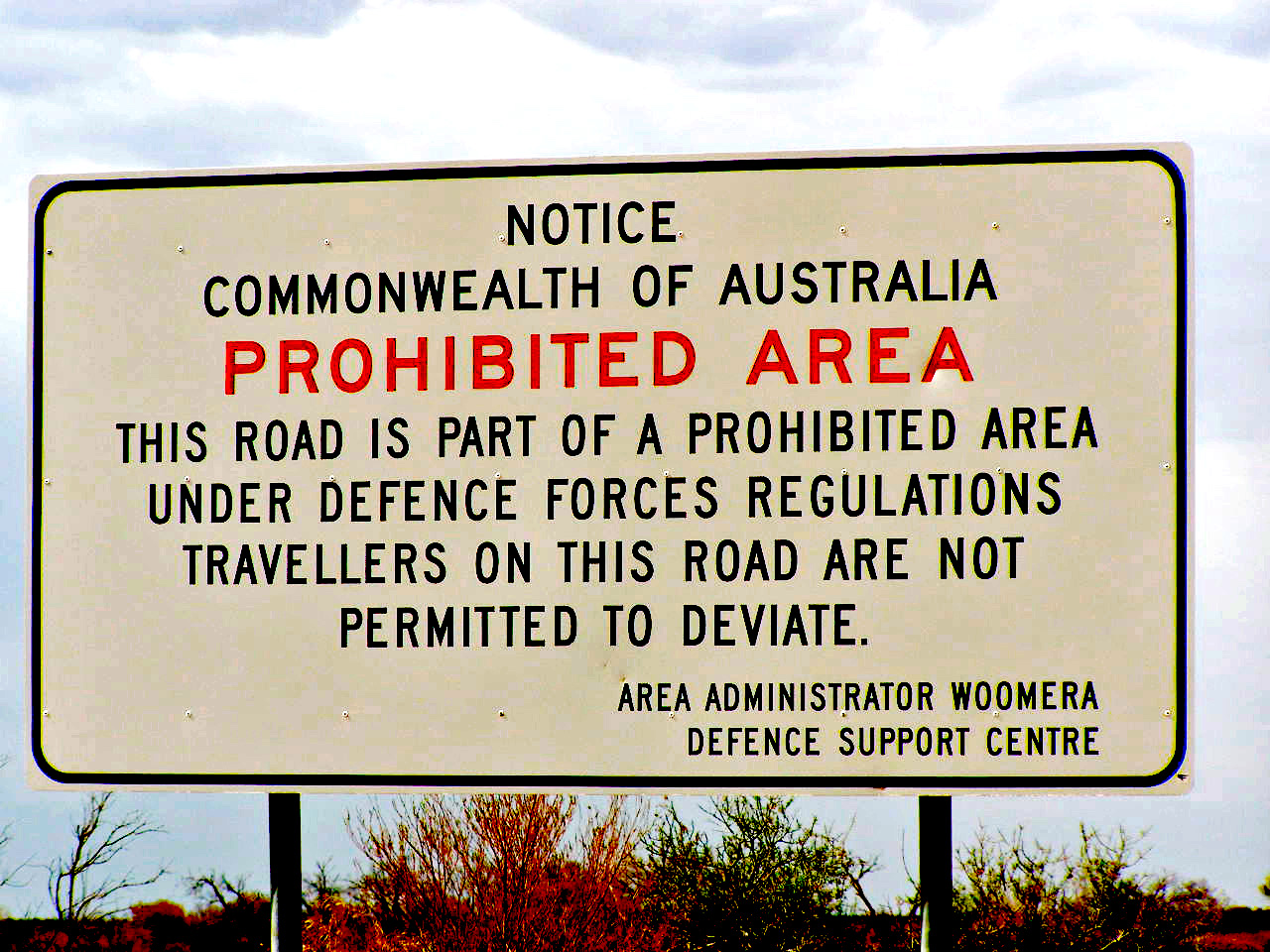
Indication on Stuart Highway, which goes through the Woomera Prohibited Location, South Australia, 2007. (Kr.afol, CC BY-SA 3.0, Wikimedia Commons)
It was just in 1994 that the Anangu got compensationfor injury and damages of the nuclear screening.
Both Britain and the U.S. are now working on brand-new generation nuclear-capable hypersonic rocket jobs in Australia– Britain’s BAE Systems has Job Javelinand the U.S. is establishing SCIFiREwith arms manufacturers Raytheon, Boeing and Lockheed Martin.
The RAAF Woomera Range has been the site of BAE Systems advancement deal with its Taranis supersonicstealth bomber drone,though the job has actually stalled, and on the Mantis, a long-endurance drone.
Airplane is also using Australia in developing the Breezesolar-powered high-altitude long-endurance pseudo-satellite surveillance drone, created to provide live vision of combat for as much as 40 hours from 20 kms high.
It’s been undergoing test flights in the calm air above Wyndham in Western Australia but has actually suffered numerous crashes. The U.K. Ministry of Defence is one of the mainconsumers, if not the only client, for the Breeze.
While Australia awaits its own fleet of 12 armed Reaper drones, Britain has been utilizing RAAF drone pilots embeddedwith the RAF conducting objectives over Iraq and Syria, piloted from the RAF base at Waddington in Lincolnshire.
Australian pilots begantrainingon Reaper drones in 2015 in the U.S. and flew functional objectives for the USAF in its war over Iraq and Syria.
Pine Gap
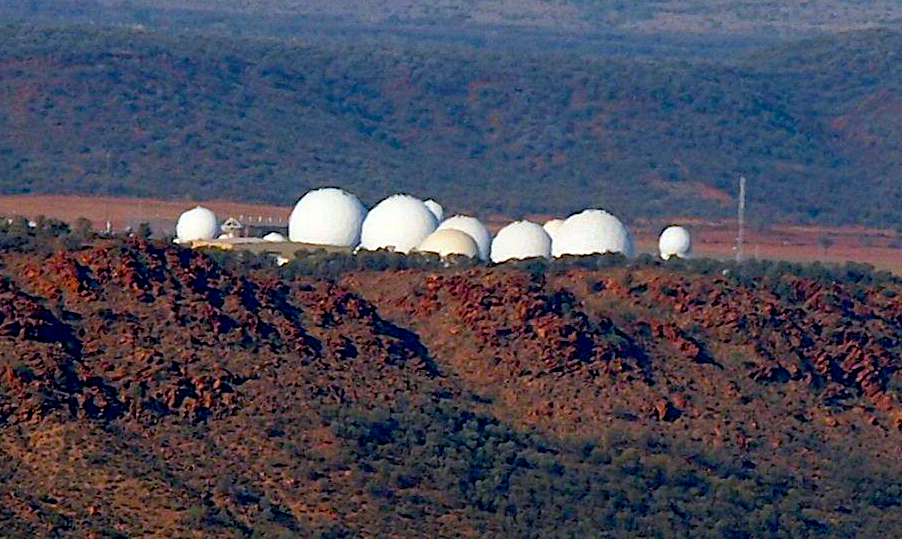
Pine Gap, a crucial U.S.-run listening post in Australia’s Northern Area. (Wikipedia)
Nevertheless, it is the supersecretPine Spacesatellite surveillance base– formally entitled “Joint Defence Center Pine Space” (JDFPG, but recognized generally to the 800 staff as “the base”)– that is Australia’s greatest contribution to the5 Eyesalliance that also consists of Canada and New Zealand.
Located near Alice Springs, it’s a base for the C.I.A., National Security Agency and National Reconnaissance Workplace and collects signals and other information from a range of satellites snooping on military, business and private interaction systems.
Mirrored with the N.S.A.’s base at RAF Menwith Hillin North Yorkshire, it forms an international security net.
Battlefield intelligence utilized by the U.S. in its “war on fear” has beengatheredand examined at Pine Space for usage by the U.S. military including in potentially unlawful drone strikesin the Middle East that havekilledthousands of civilians.
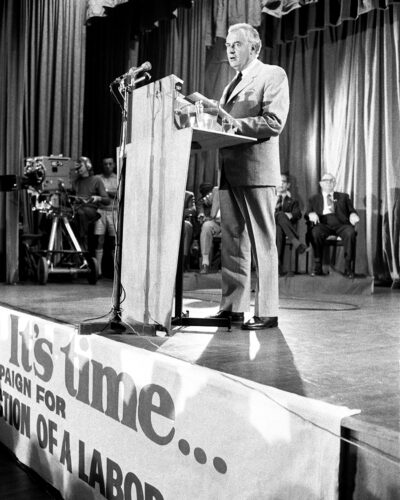
Gough Whitlam offering a speech throughout the 1972 election project.(National Archives of Australia, CC BY 4.0, Wikimedia Commons)
Last year, research study by professor Jenny Hocking revealed personal files from the Australian National Archive thatshowedthe advance notification that Queen Elizabeth had of the plotting by the guv general. The documents also revealed a level of encouragement from senior staff of the Palace in the dismissal of the democratically elected prime minister.Pine Gap initially attracted public disquiet in 1975 when the then Australian Prime Minister Gough Whitlam threatened torevealthe names of C.I.A. agents included. He was controversially dismissed by the Queen’s representative in Australia, Governor General John Kerr, on November 11, 1975.
At the time of the general public and political controversy over Pine Gap, the website hosted just 8 satellite dishes. Today, the base is quietly undergoing a brand-new growthwith 6 brand-new dishes being built, bringing the total now to 39.
The brand-new meals, most likely targeted at detecting missile launches, will boost the U.S.’s planning to fight a nuclear war with China.
Australia is toppling headlong inacceptingthe rotational basing of U.S. Militaries in Darwin– presently 2,500, quickly expected to be 5,000 personnel. South of Darwin, near Katherine, the Tindal RAAF base is going through a significant upgradeof refueling ability and armaments storage, to permit it to host an expanded variety of allied military airplane, consisting of the U.S.’s long-range B-52 bombers.
Nuclear Expansion
Australia prides itself on belonging to the “rules-based worldwide order,” however it is complying with 2 nuclear weapons states that are breaching the NuclearNon-Proliferation Treaty.
Britain has actually announced it is to increase thenumberof nuclear warheads it has for its Spear submarines, and together with the U.S. is establishing brand-new generation hypersonic rockets capable of delivering nuclear warheads anywhere on the globe.
In addition to the U.K. and U.S., Australia is a holdout from signing or ratifying the newTreaty on the Restriction of Nuclear War. This treaty would prohibit Australia from “arrangement of assistance to any State” performing activities ranging from producing, having and stockpiling of nuclear weapons, through to possessing the danger to utilize nuclear weapons.
The Treaty requirements “to prevent and reduce” forbidden activity “on area under its jurisdiction or control” would see a range of essential limitations placed on Australia– consisting of, most importantly, an evaluation of the nuclear war-supporting functions of the Pine Space satellite surveillance base.
War Crimes in Afghanistan

Australian soldiers on foot patrol in Uruzgan, Afghanistan, Aug. 16, 2008.(ISAF, John Collins, U.S. Navy)The U.K. and Australia have actually played an essential collaboration function considering that the 9/11 attacks however have actually handled the fallout slightly differently. When theBrereton Report, an Australian-government led examination into alleged war criminal offenses by Australian unique forces in Afghanistan, released its findings in November 2020 the outcomes were ravaging.
A four-year queryfoundthat 39 Afghan civilians were murdered by Australian forces in 23 events in 2009, 2012 and 2013. The Kabul-based Australian photojournalist Andrew Quiltyexposedcountless more killings by Australian soldiers that went unmentioned in the Brereton Report.
According to the Australian government, the Taliban takeover of Afghanistan may possiblypreventcontinuous examinations into war criminal offenses though the country is at its most relatively serene for years. It’s difficult not to conclude that Australian authorities see the Taliban federal government as a hassle-free impediment to progressing with any prosecutions.
Nonetheless, the Brereton Report is among the more thorough assessments of any Western army that occupied Afghanistan after October 2001. None of this is to defend the Australian federal government’s action to the report, which is filled withobfuscation, rejection and willful loss of sight, but it’s still remarkable to many other comparable countries.
This is in spite of bothCanadaandNew Zealandhaving discovered hard evidence of their own forces dedicating abuses in Afghanistan and the U.S. leaving scrutiny after pushing the International Crook Court for years tojust investigatethe Taliban and ISIS.
U.S. President Donald Trump gave clemency to U.S. military workers whoeliminatedAfghans. Fox News had encouraged Trump topardonthese guys accused of war criminal offenses.
The seriousness of the Brereton Report was shown in remarks by the Afghan-based Independent Human Being Rights Commission. Its chairperson, Shaharzad Akbar,saidthat the Australian examination ought to press the U.K., U.S. and other profession forces to examine their role in the death of civilians since 2001.
She especially worried that the U.K. “open an independent query to evaluate and examine the allegation of unlawful killings by U.K. special forces.”
Rather, the British Ministry of Defencestatedthat its “militaries are held to the greatest standards, and the Service Police have actually performed extensive and independent examinations into alleged misbehavior of U.K. forces in Afghanistan. Since today, none of the historical accusations under Operation Northmoor have led to prosecutions.”
Regardless of declaring that it was investigating severe claims of war criminal activities in both Iraq and Afghanistan, Britainfailedto find anybody senior worth prosecuting despite mountains of proof. One soldier was jailed forstabbinga 10-year-old Afghan kid.
Nonetheless, cover-ups and lies werecentralto Whitehall’s reaction.
The murder of Afghan civilians was not deemed crucial enough nor the dogged pursuitby Saiffulah Yar who implicated U.K. forces of eliminating 4 members of his household in Helmand Province in 2011.
There was necessary reporting by BBCPanoramaand BBC Newsnight though overall the Western media has not covered itself in glory reporting the Afghan war, typicallychoosinggovernment and military sources to Afghans.
Despite the Chilcot query, with itsdamning evaluationof how former Prime Minister Tony Blair pressed his country into war with Iraq, nobodyhas actually been seriously held to account for Britain’s failed wars in Iraq and Afghanistan.
The fear remains that Australia, despite the Office of the Special Investigator still investigatinghuman rights breaches in Afghanistan, will follow London’s lead and bury or indefinitely delay any potential war criminal activities trials.
Elite soldier Ben Roberts-Smith isaccusedof killing Afghan civilians and is currently taking legal action against major Australian media reports for daring to report it. The trial has actually ended up being a proxy war criminal activities trial while masquerading as a defamation case. It may be the just such trial in the foreseeable future.
Militarized Immigration Policy
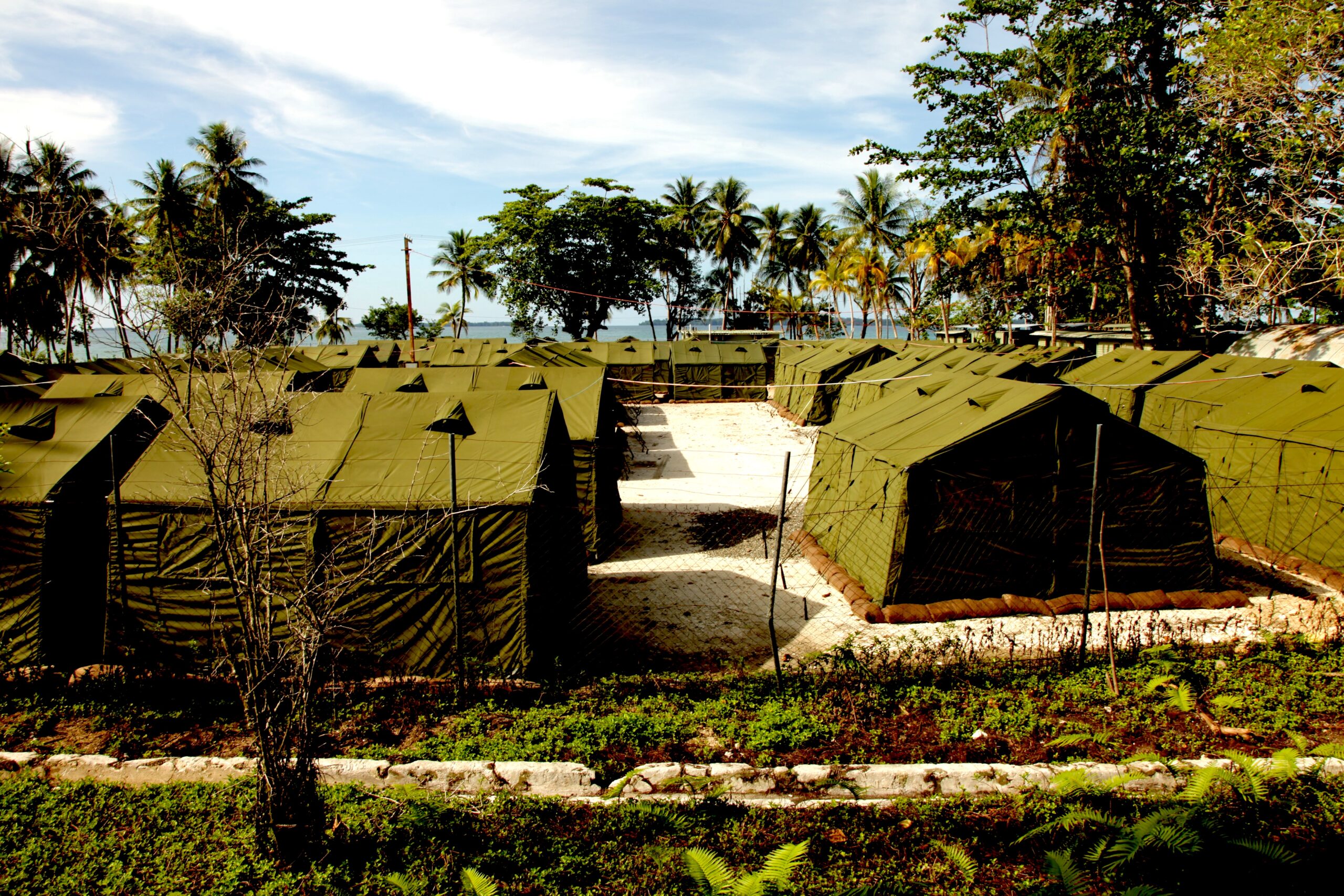
Australia’s Manus Island local immigration processing facility, 2012.(Flickr, DIAC, CC BY 2.0
, Wikimedia Commons)It’s the militarized immigration policy where Canberra arguably motivates London the most. Australia’s migration policy isknownfor its ruthless neglect for human rights and sending out refugees to remote Pacific Islands for processing. The policy hasdeep rootsin Australia’s settler colonial history.
The so-called Pacific Option began in 2001 and quickly got bi-partisan assistance in the Federal Parliament. By force placing susceptible refugees from Afghanistan, Iraq, Syria, Myanmar, Sri Lanka or somewhere else in overcrowded, hot and dangerous locations was a cruelly efficient method of dehumanizing and silencing people, many of whom were getting away wars in nations that Australia was allegedly trying to liberate through occupation.
Despite protests from the European Union and lots of other liberals all over the world, Australia’s refugee policy has become adesignfor the EU andBritainunder the Conservative government.
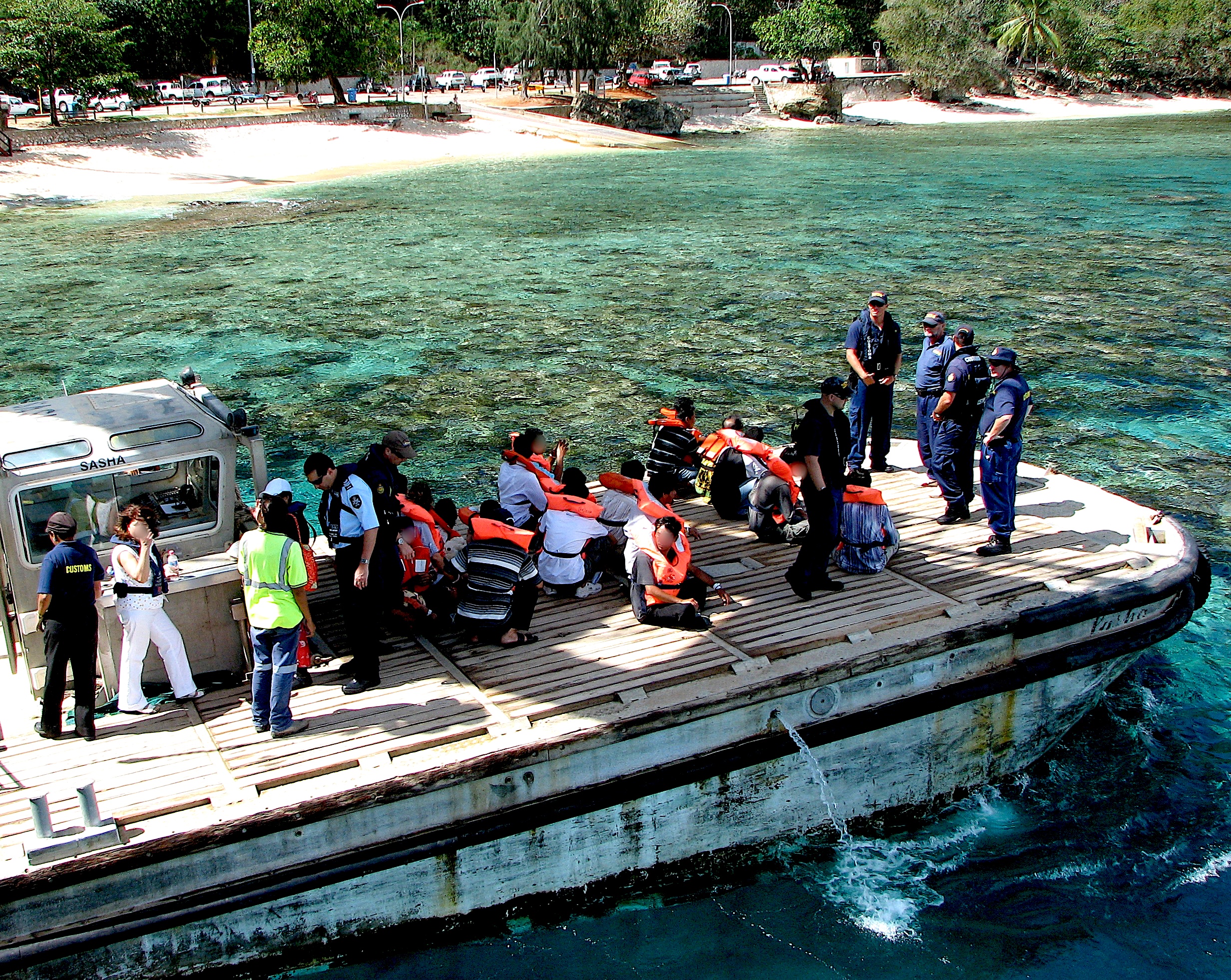
Christmas Island Immigration Detention Centre, Dec. 7, 2008. (Flickr, DIAC, CC BY 2.0, Wikimedia Commons)
Former Australian Prime Minister Tony Abbott, a conservativeclimate denier, set the tone in a 2015 speech when delivering the Margaret Thatcher lecture in London byarguingthat Europe needs to shut its borders totally. “The Australian experience proves that the only way to dissuade people seeking to come from afar is not to let them in,” he stated.
The U.K. Conservatives listened and agreed. In 2020, U.K. House Secretary Priti Patel supposedly analyzedthe practicality of building an asylum candidate detention center 6,000 kilometers far from Britain, in Ascension Island or St. Helena in the South Atlantic, however ultimately chose it was logistically too challenging.
Instead, in 2021 Patel revealed that Britain would by forcepush backrefugee boats crossing the English Channel, a carbon copy of Australia’s boat turn-back policy which the U.N.estimatedin July had resulted in 800 individuals on 31 boats because 2013 being hauled back to potential danger, sinking or death.
In many cases, Australia is credibly implicated ofconcealingactions that resulted in numerous deaths at sea. Australia likewise stands implicatedof paying Indonesian individuals smugglers to keep boats out of Australian waters.
Australia and Britain share a political, ideological and military partnership that transcends partisan bickering. As reporters who have investigated this relationship for many years, it’s exposing how little analysis is provided to it by the establishment media and political elites.

